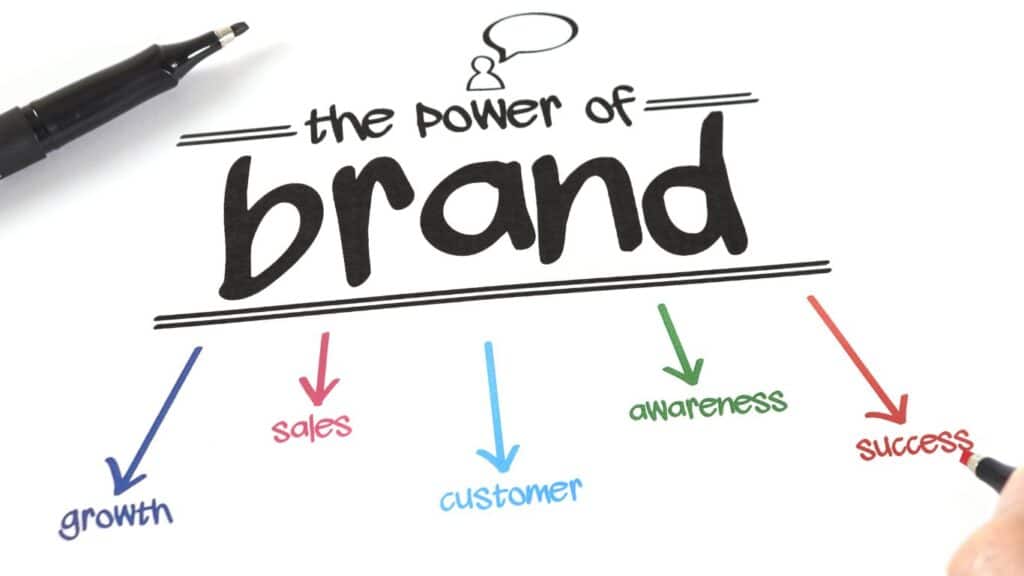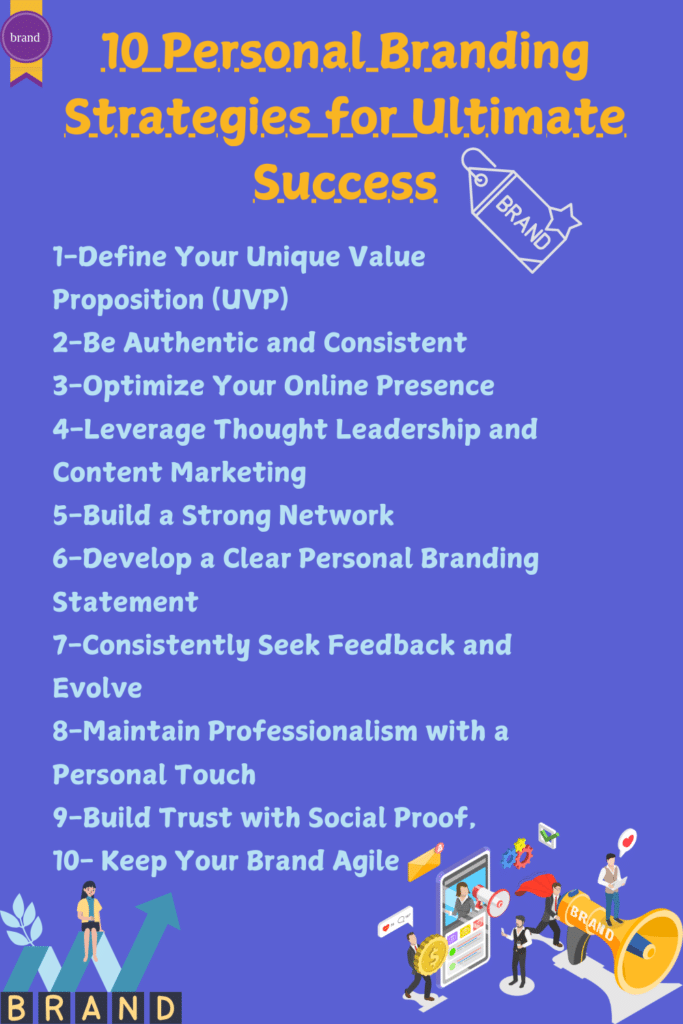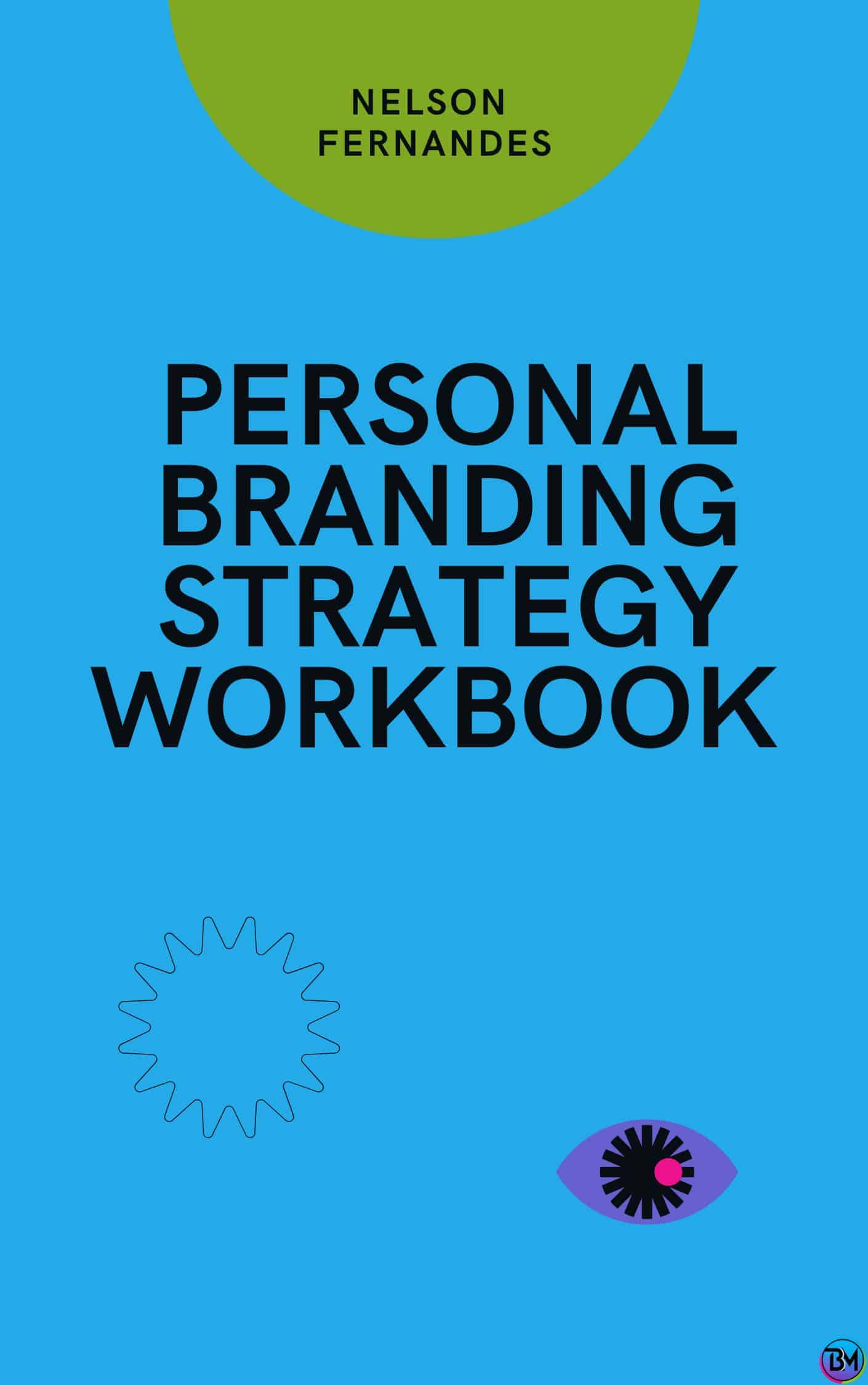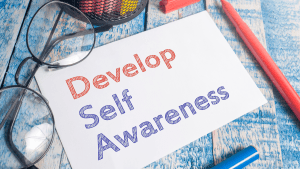In today’s competitive world, personal branding is no longer optional—it’s essential. Whether you’re an entrepreneur, freelancer, or corporate professional, how you present yourself online and offline directly impacts your career and business opportunities.
🚀In a Nutshell
In a world where everyone’s vying for attention, a strong personal brand sets you apart. This guide explores how to define your unique value, stay authentic and consistent, and create content that resonates. Whether you’re a freelancer, entrepreneur, or corporate professional, these strategies will help you build trust, attract opportunities, and make a lasting impression.
Ready to unlock your potential? Let’s dive in!
The right personal branding strategies can help you differentiate yourself from the competition, establish authority in your industry, and attract your target audience. This guide explores some of the best personal branding strategies to help you grow your influence and achieve long-term success.

What is Personal Branding?
Personal branding is the practice of marketing yourself, your career, and your personal expertise as a brand. It involves defining and communicating your unique value, strengths, and personality to stand out in your field. Building a personal brand means creating a consistent and authentic presence that highlights your values, skills, and professional goals.
While many people associate branding with companies or products, individuals can also leverage branding techniques to:
- Develop authority and thought leadership
- Build trust with a target audience
- Increase visibility in their industry
- Open doors to new career opportunities
With that foundation, let’s dive into some of the best personal branding strategies you can implement today.
🎯 Personal Branding Statistics 2025
- ⭐ 77% of consumers prefer to purchase from a brand they recognize (Forbes, 2024)
- 📈 67% of Gen Z adults believe having a strong personal brand is important (Morning Consult, 2024)
- 💫 72% of LinkedIn users haven’t backed up their professional network (LinkedIn, 2024)
- 🎥 Posting 2-3 times per week on LinkedIn is optimal for personal brand growth (AuthoredUp, 2024)
Sources: Forbes, Morning Consult, LinkedIn Research 2024-2025
1. Define Your Unique Value Proposition (UVP)
Your unique value proposition (UVP) is the core of your personal brand. It answers the fundamental question: What sets you apart from others in your industry? Your UVP should highlight your strengths, expertise, and what you can offer that no one else can.
How to Define Your UVP:
- Identify your strengths: Reflect on your skills, experience, and what makes you stand out from the competition.
- Know your audience: Understand the needs and challenges of your target audience so that you can tailor your message to them.
- Communicate benefits, not just features: Focus on the value you bring to others, not just your achievements.
By clearly defining your UVP, you make it easier for others to understand why they should choose you over someone else.
2. Be Authentic and Consistent
In an age of polished images and carefully curated content, authenticity stands out. Authenticity in personal branding means being true to yourself and showcasing your personality, values, and experiences in a genuine way.
People connect with people. When you show your authentic self, you’re more likely to build trust and establish meaningful relationships with your audience.
Tips for Authentic Branding:
- Embrace your personality: Whether you’re introverted or extroverted, formal or casual, let your personality shine through your content.
- Be consistent: Consistency in your tone, messaging, and visual branding (such as your logo, color scheme, or headshot) reinforces your identity and builds trust over time.
- Share your journey: Don’t be afraid to share challenges or failures alongside successes. Vulnerability fosters connection and humanizes your brand.
3. Optimize Your Online Presence
Your online presence plays a crucial role in shaping how people perceive you. When people search for your name or niche, the results they find shape their first impression of you. Therefore, optimizing your digital footprint across various platforms is essential.
Key Elements to Focus on:
- Professional Website or Blog: A website serves as your digital business card. Ensure it showcases your portfolio, testimonials, services, and up-to-date content that reflects your expertise. A personal blog can also highlight your thought leadership in your industry.
- Social Media Profiles: Be active on platforms like LinkedIn, Twitter, Instagram, and others relevant to your audience. Each platform should convey a consistent personal brand.
- SEO: Optimize your content for search engines so that people can easily find you. This involves using keywords like “personal branding tips” and “personal branding techniques” throughout your website, blog, and social media bios.
4. Leverage Thought Leadership and Content Marketing
Content marketing is one of the most effective ways to establish yourself as an expert in your industry. By consistently sharing valuable insights, tips, and knowledge, you can build credibility and trust with your audience.
Types of Content to Create:
- Blog posts or articles: Write informative pieces related to your industry or niche, showcasing your expertise. Sharing personal branding strategies via your blog will help establish you as a thought leader.
- Guest posts: Contribute to reputable publications or industry blogs to reach a wider audience.
- Podcasts and webinars: Create or participate in podcasts and webinars to engage with your audience in a more personal way.
- Social media posts: Share bite-sized insights, quotes, or tips on platforms like Twitter and LinkedIn to maintain regular engagement with your audience.
📌 Save this infographic for quick reference on Pinterest!

📌 Save this infographic for quick reference on Pinterest!
5. Build a Strong Network
Your personal brand is strengthened by the relationships you build within your industry. A solid network opens doors to new opportunities, collaborations, and partnerships, all of which amplify your reach.
Networking Tips:
- Attend industry events and conferences: Whether virtual or in-person, these events are great opportunities to meet people and share your knowledge.
- Collaborate with other influencers: Collaborations, guest appearances, or interviews with other thought leaders can expose your brand to a new audience.
- Engage on social media: Participate in conversations, share others’ content, and interact with your followers. Engaging meaningfully in online communities can lead to fruitful professional relationships.
Get the Free Personal Branding Worksheet
Download our fillable workbook to develop your personal brand strategy and brand content tactics
GET IT FREE
6. Develop a Clear Personal Branding Statement
A personal branding statement is a concise and impactful summary of who you are, what you do, and what you offer. It helps potential clients, employers, and followers immediately understand your brand’s essence.
Example of a Personal Branding Statement:
- “I help small business owners improve their online presence through effective social media strategies and content marketing.”
This statement tells people who you serve, what you do, and how you can solve their problem.
Your personal branding statement should be included in your LinkedIn bio, on your website, and anywhere people look to learn more about you.
Ready to elevate your professional presence? Create your unique personal brand identity with our interactive Personal Brand Generator
7. Consistently Seek Feedback and Evolve
Personal branding is not a “set it and forget it” strategy. As your career evolves, so should your personal brand. Feedback from peers, mentors, or even your audience can provide valuable insights into how you are perceived.
Ways to Gather Feedback:
- Ask trusted colleagues: Seek input from those who know your work and can offer honest feedback.
- Analyze your social media performance: Check engagement metrics to see which content resonates most with your audience.
- Conduct surveys: Send out short surveys to your network or clients to gauge how they perceive your brand and whether you’re delivering the value you aim to provide.
Once you gather feedback, adjust your personal branding strategies to ensure that your brand stays relevant, aligned with your goals, and resonant with your audience.
8. Maintain Professionalism with a Personal Touch
It’s essential to maintain professionalism across all channels, but don’t forget to infuse a personal touch. Whether it’s sharing anecdotes or personal experiences, connecting on a deeper level with your audience will help create a lasting impression.
Ways to Add a Personal Touch:
- Tell stories: Use storytelling to share your journey, including the challenges and lessons you’ve learned.
- Be approachable: Engage with your audience by responding to comments, emails, or messages promptly.
- Celebrate milestones: Whether it’s your career achievements or personal triumphs, share your wins with your followers to build a sense of community.
9. Build Trust with Social Proof
People trust recommendations and testimonials from others. Social proof is a powerful tool in establishing credibility for your personal brand.
Forms of Social Proof:
- Testimonials: Display testimonials from colleagues, clients, or industry peers on your website or LinkedIn profile.
- Case studies: Showcase specific examples of how you’ve helped others succeed.
- Endorsements: Gain endorsements and recommendations on platforms like LinkedIn to further validate your skills and expertise.
10. Keep Your Brand Agile
As industries evolve and trends shift, your personal brand should be adaptable. Don’t be afraid to pivot when necessary, whether that’s taking on new skills, targeting a new audience, or changing your content focus.
How to Stay Agile:
- Stay informed: Follow industry news, trends, and technological advances to keep your personal brand relevant.
- Re-evaluate your goals regularly: Ensure that your brand aligns with your long-term career or business goals.
- Experiment with new platforms: Try new ways of reaching your audience, such as TikTok for short-form content or a new podcast format.
🌟 Personal Branding FAQ
Conclusion: Start Building Your Personal Brand Today
Personal branding strategies can be your key to unlocking career advancement, new business opportunities, and a more powerful online presence. The best personal branding approaches involve authenticity, consistency, a solid online presence, and leveraging content to demonstrate your thought leadership.
By combining these strategies, you can create a compelling personal brand that stands the test of time and resonates with the people who matter most in your professional journey.
Start today—define your unique value, build your network, and engage with your audience consistently. Personal branding is an ongoing process, but with the right strategies in place, it’s an investment
Ready to Build Your Personal Brand? 🚀
Download your free Personal Branding Strategy Workbook now
DOWNLOAD NOW📚 Expert Resources:










